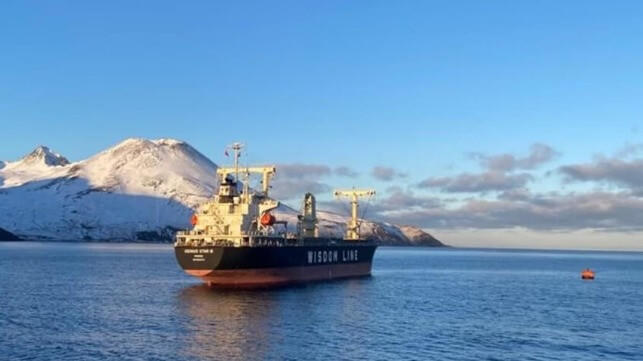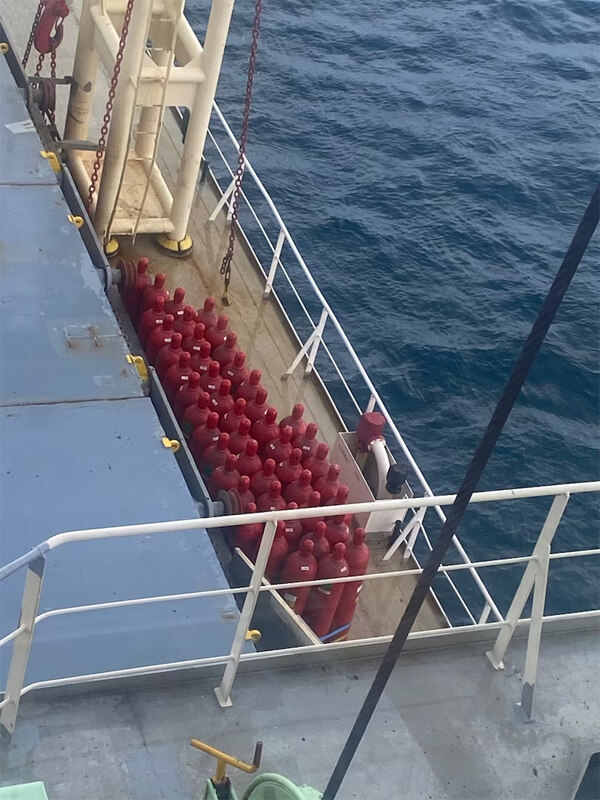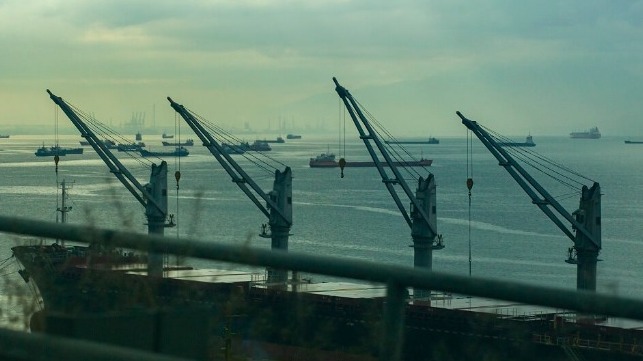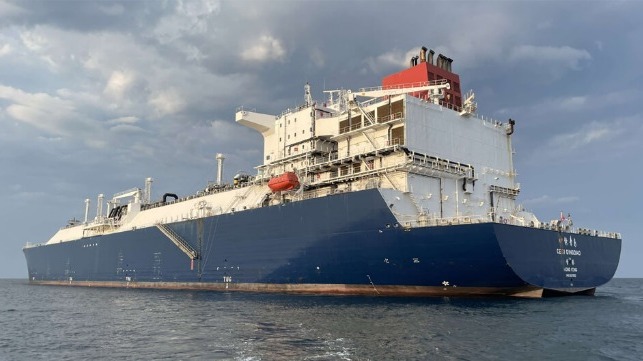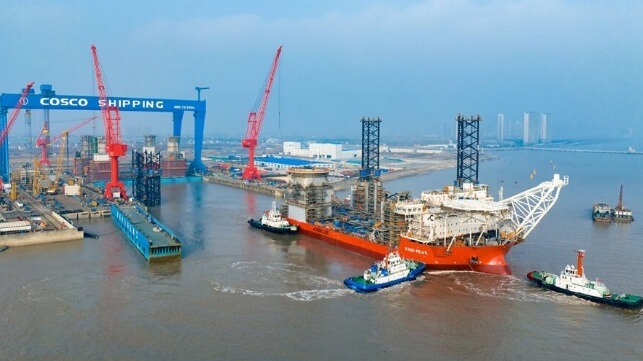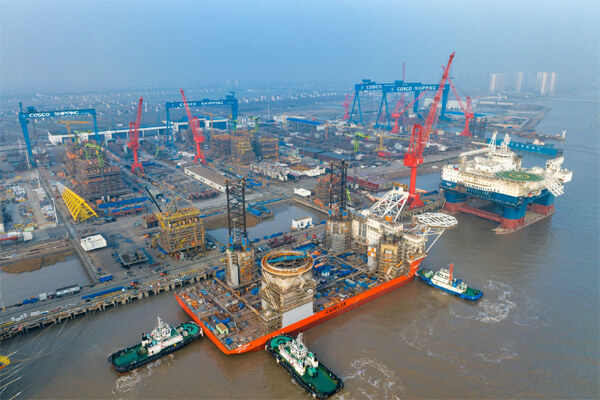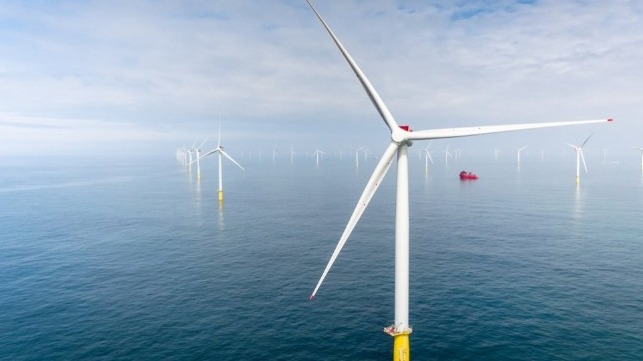TAX HAVEN
Isle of Man Registry Welcomes World's Most Powerful Sailing Cargo Ship
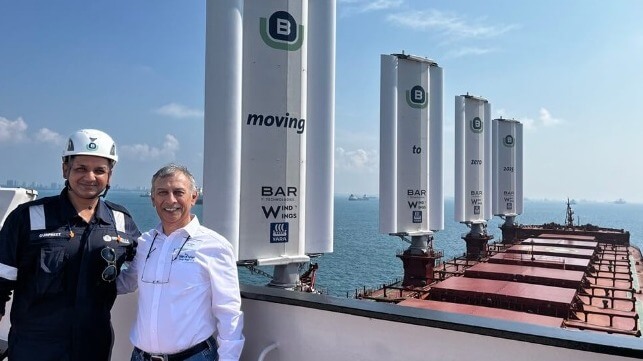
[By Isle of Man Ship Registry]
The world’s most powerful sailing cargo ship has gone into service under the Isle of Man flag.
The pioneering Berge Olympus was officially unveiled in October after its retrofit by Berge Bulk, one of the world’s leading dry bulk ship owners.
Four WindWings have been installed on the Newcastlemax bulker as part of Berge Bulk’s ambition to become carbon neutral by 2025. The cutting-edge technology uses wind power to reduce fuel and emissions.
In addition, Berge Olympus has been retrofitted with a shaft generator system. The shaft generator is driven by the main engine to supply electric power to the vessel, also saving fuel and reducing emissions.
The Isle of Man Ship Registry (IOMSR) participation in the projects is a testament of shared vision with Berge Bulk as one to lead the industry to a zero-carbon future through safe, efficient, and sustainable shipping.
And the IOMSR’s Singapore representative Captain Raja Ray was one of the first on board to see the new technology first-hand following the retrofit.
He said: “I inspected the vessel last year before its retrofit and returning on board, the transformation and the technology behind it that I saw was truly amazing.
“Berge Olympus holds a bold vision for the future, serving a testament to both innovation and sustainability.
“We are very proud that the Berge Olympus is part of the IOMSR fleet and that we are able to support Berge Bulk in its future ambitions as we both work together in leading the industry on its journey to net zero.”
The IOMSR flagged Berge Olympus will sail between Brazil and China - a trade route known for having favourable wind conditions.
Its WindWings are large, rigid sails that can be adjusted to optimise the aerodynamic performance of the ship. Each of the four WindWings is 20m wide and 37.5m tall, which is taller than a 10-story building.
The WindWings can save up to 20 per cent fuel consumption, and corresponding CO2 emissions on an average worldwide route.
Starting out with 12 vessels in 2007, the company now owns, operates and manages a fleet of 85 safe and fuel-efficient vessels, equating to 14 million DWT.
Cameron Mitchell, IOMSR director, said: “Berge Bulk’s WindWings project stands as testament to its commitment to lead the way towards a zero-carbon future while enhancing vessel efficiency.
“The initiative aligns with the new IMO goals, to reach net-zero GHG emissions from international shipping by or around 2050, goals which IOMSR is also fully committed to, through our industry leading work.
“We look forward to continuing our partnership with Berge Bulk as it works towards its sustainability aims.
“The project also highlights that there are clear opportunities for vessel owners to swiftly retrofit new technologies to make a rapid and profound difference to the climate impact of their fleet.”
IOMSR believes the maritime industry has a collective responsibility to respond to the climate emergency.
To that end it became the first flag state to join the Getting to Zero Coalition, an industry-led alliance working towards decarbonising the international maritime shipping sector.
It is a partnership between the Global Maritime Forum, the Friends of Ocean Action and the World Economic Forum. Members include more than 120 organisations from the maritime, energy, infrastructure and finance sectors
In another industry leading development, in April 2022 IOMSR become the first flag state in the world to reduce registration fees for ships deploying green technology.
The measure gives ship owners a 15 per cent reduction on their annual registration fee. The reduced fee is available to operators of cargo ships, commercial yachts or passenger ships which are investing in biofuel, alternative fuels, wind, or shore-side energy technology.
IOMSR is one of the world’s leading flag states and is ranked 18 in the world by Clarkson’s with around 300 ships and 12.5m GT under its flag. The registry has held top spot on the Paris MoU Port State Control whitelist and is on the whitelist in the Tokyo MoU rankings.
The registry is headquartered in Douglas, Isle of Man, a self-governing British Crown dependency and is a Category One member of the Red Ensign group.
